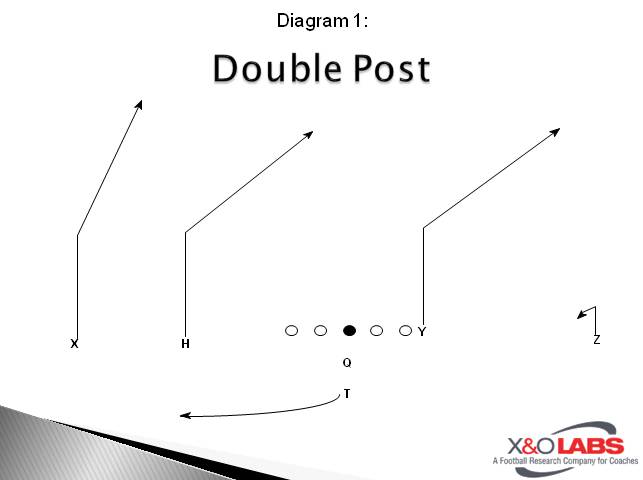By Jared Hottle
Offensive Coordinator / Wide Receiver Coach
Dakota State University (SD)
Twitter: @CoachHottle
Introduction:
It is well documented that explosive plays lead to points, success, and winning. Brian Billick in Developing an Offensive Gameplan, Bill Connelly in his article “The Five Factors: College football’s most important stats” and the Football Outsiders and their tracking of explosive plays in the NFL all have reached one conclusion. Explosive Plays equal wins. My study in the success of Dakota State University Football reaches the same conclusion. Obviously, every college coach in America wants explosive plays on Saturday but at Dakota State we believe there are ways to manufacture explosive plays through specific processes in scheme, practicing, game planning, and recruiting.

The Study
The first thing we must do is define explosive plays. Many programs and coaches have many different definitions and classifications for explosive plays. I decided to classify an explosive play as a run 12 yards or over and a pass 18 yards or over. These numbers are similar to the classifications used by others for the professional game (Developing an Offensive Gameplan). I have tracked the explosive plays at Dakota State over the last four years which gave me a significant sample size to run regression analysis. Most analysis on explosive plays and success is a comprehensive team view. Explosive plays are seen more on a net scale with explosive plays gained by the offense less the explosive plays given up by the defense. For my study, I wanted to view explosive plays and success through a purely offensive lens. To do this I used points instead of wins as the dependent variable. I found explosive plays to be highly significant with a p-value well under .001. The coefficient on explosive plays is 3.57. For every run 12 yards or more, or pass play 18 yards or more a team can expect 3.57 points.
Explosive Plays
As a football coach, it is obviously very intuitive to believe that the bigger plays you have the more points you will score. This data is also backed up by statistical analysis. Some coaches believe explosive plays are purely coincidental. Low-percentage plays born from a play-caller or a quarterback just taking a chance. Although there are some inherent risks when it comes to vertical passes down the field there are also other ways to generate explosive plays. Furthermore, I believe a lot can be done to help sway the percentages in the favor of the offense.
Scheme
From a scheme stand-point there are a lot of things you can do to create explosive plays. You do not need to be an exclusively or even favor a vertically passing team to create explosive plays. Although this might sound counterintuitive our focus on scheme is on that of creating efficient positive plays. You may ask how can a coach so focused on explosive plays be creating an offense focused on efficient plays?
To answer this question, we must go back to the statistics. 62% of our explosive plays happened on the 4th play of the drive or later and 60% of explosive passes and 78% of explosive runs occured in the 2nd half. I attribute this distribution of explosive plays, at least in part, to the confusion and stress a defense might feel with an offense driving and getting at least one first down, and to the fatigue of the defense over the course of a game and the tendency of a defense to miss tackles and miss assignments as they become fatigued. As an offense, to get the defense to this point, one needs to get 1st downs, take snaps, and stay on the football field.
There are many philosophies of an efficient offense at Dakota State we attempt to do this with a balanced run to pass ratio which incorporates quick passes, 5-step intermediate to deep passes, and a predominately zone running scheme. Two passing concepts that we have had luck with both in creating explosive plays against all coverage looks are our Double Post Concept and our Post and In Concept.
Double Post










